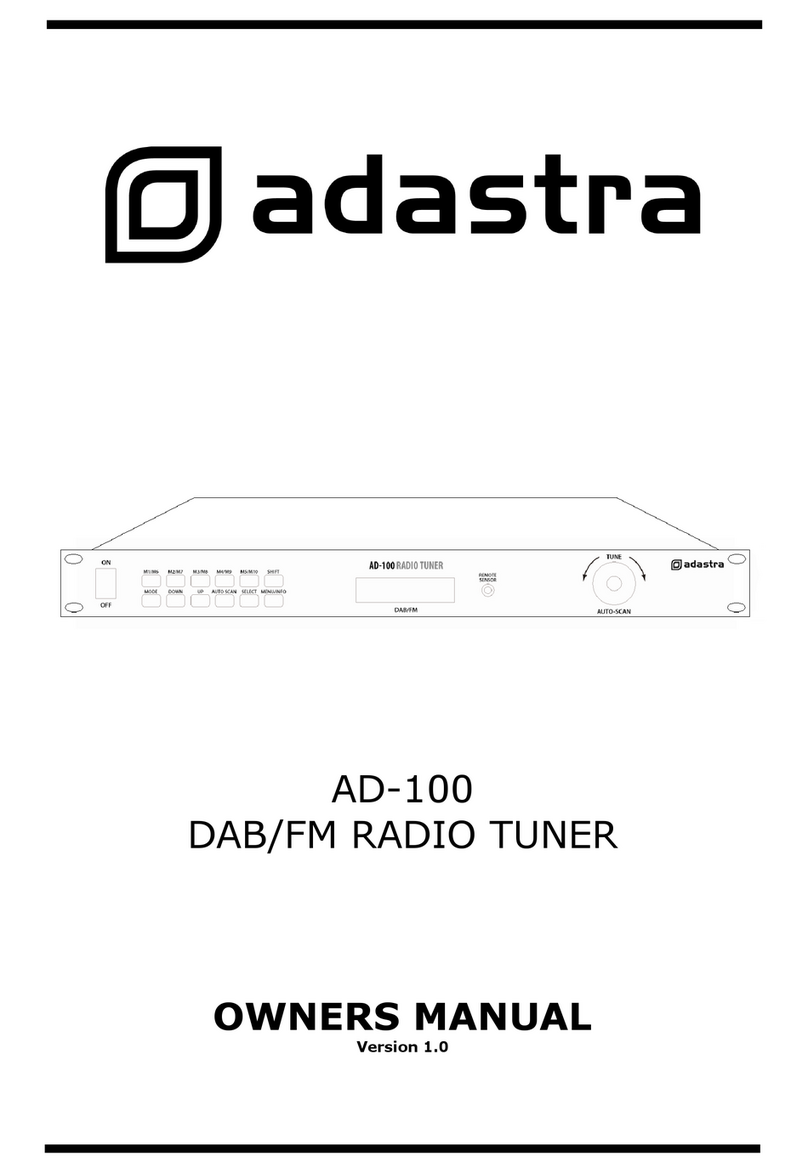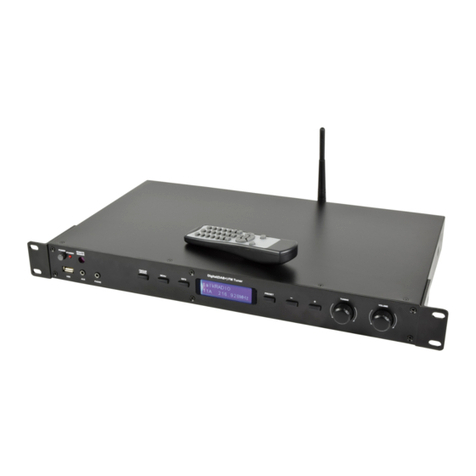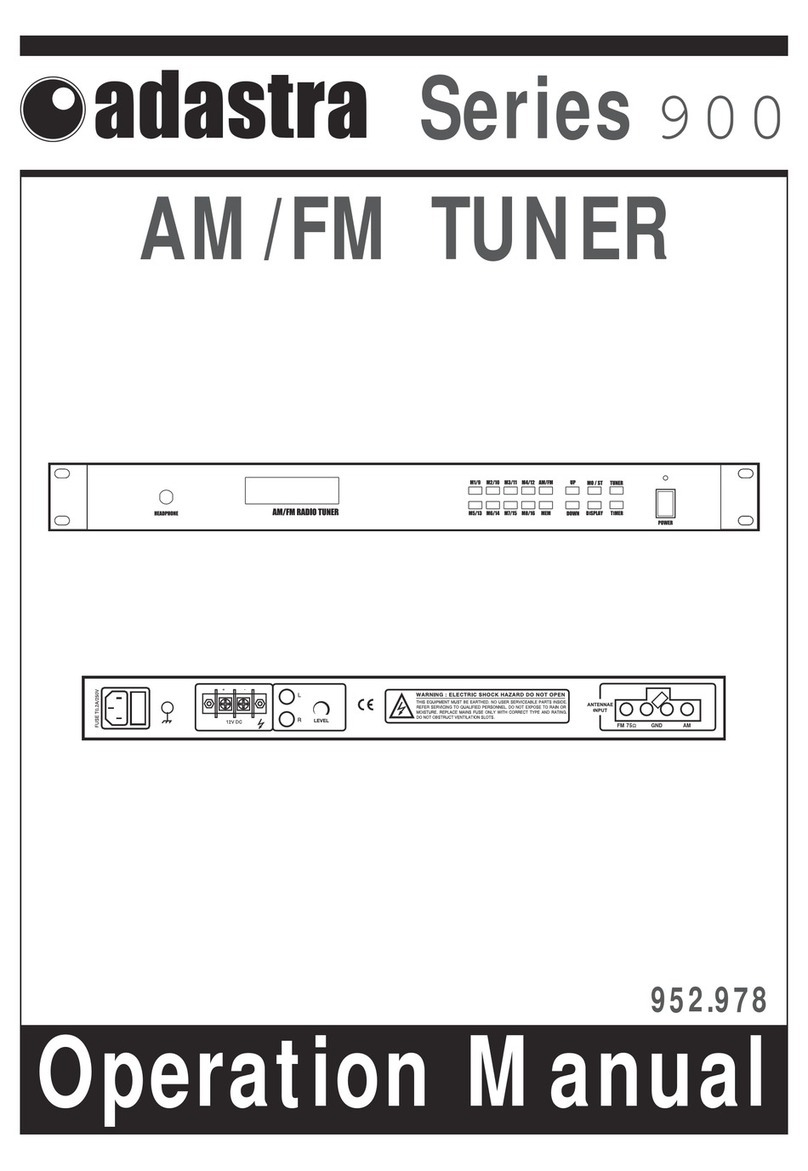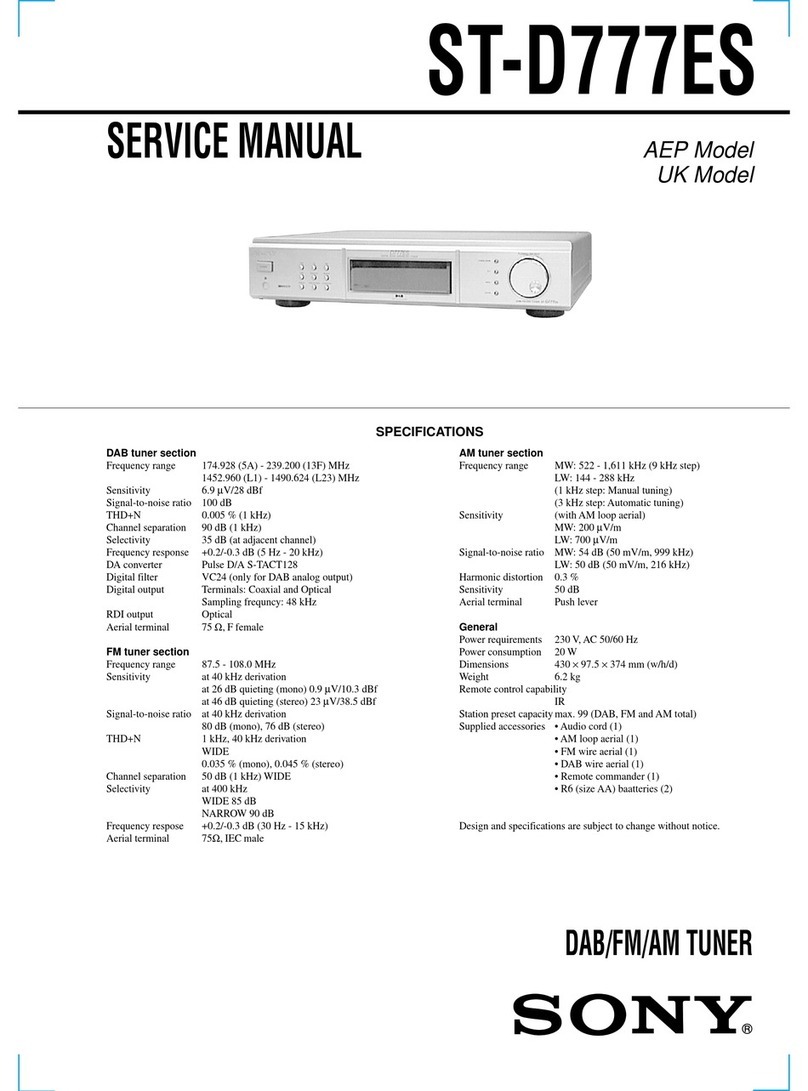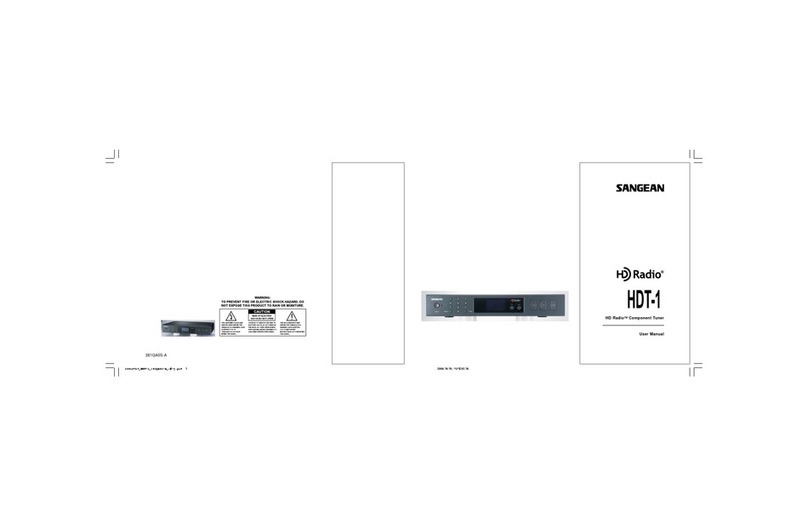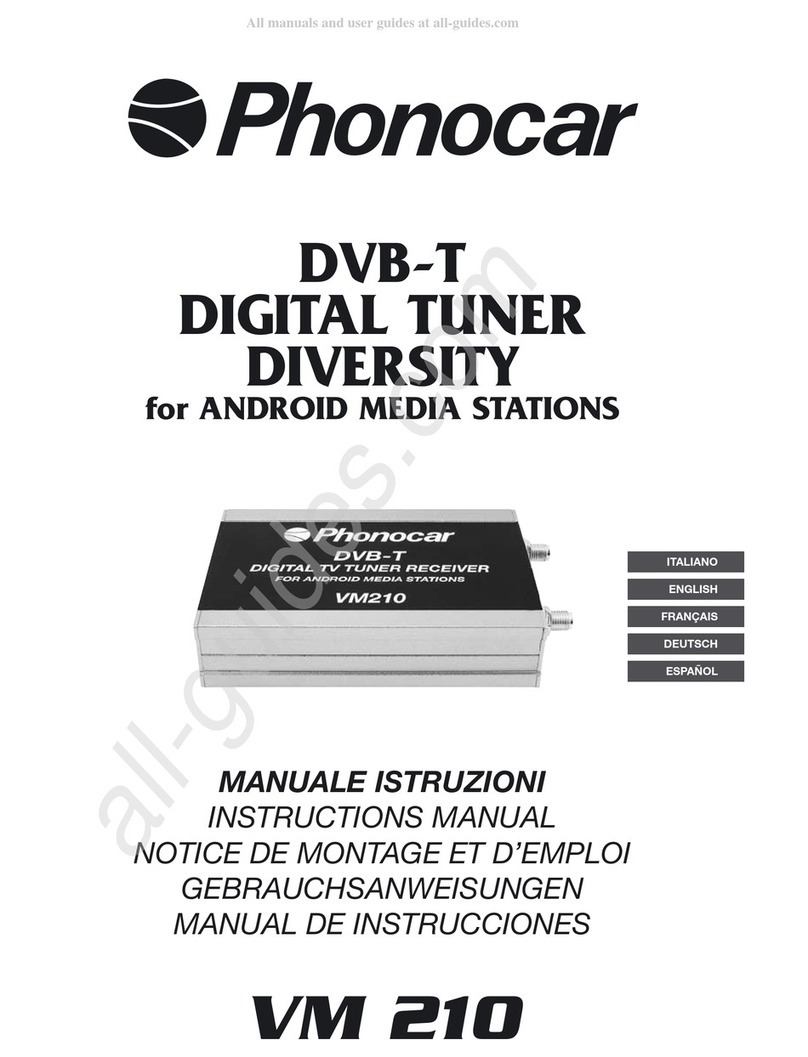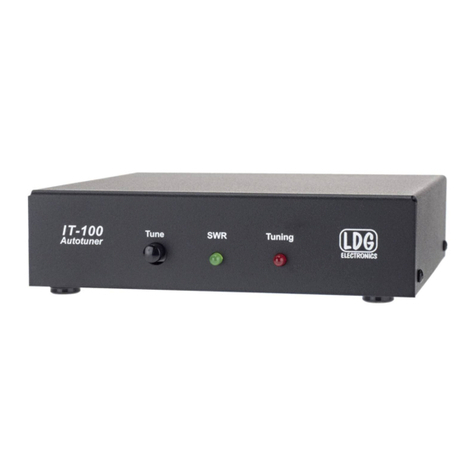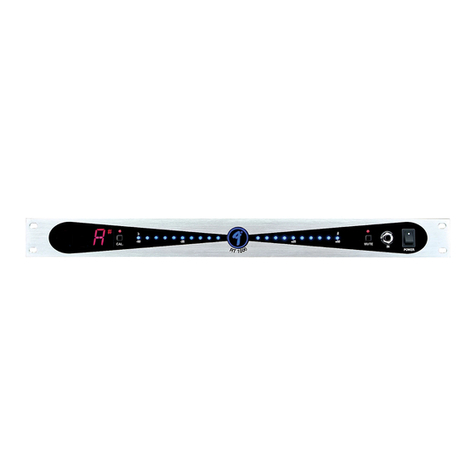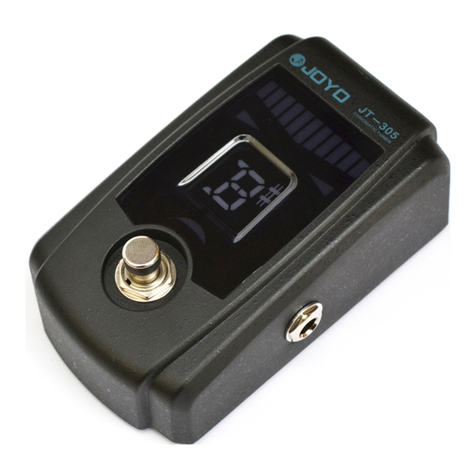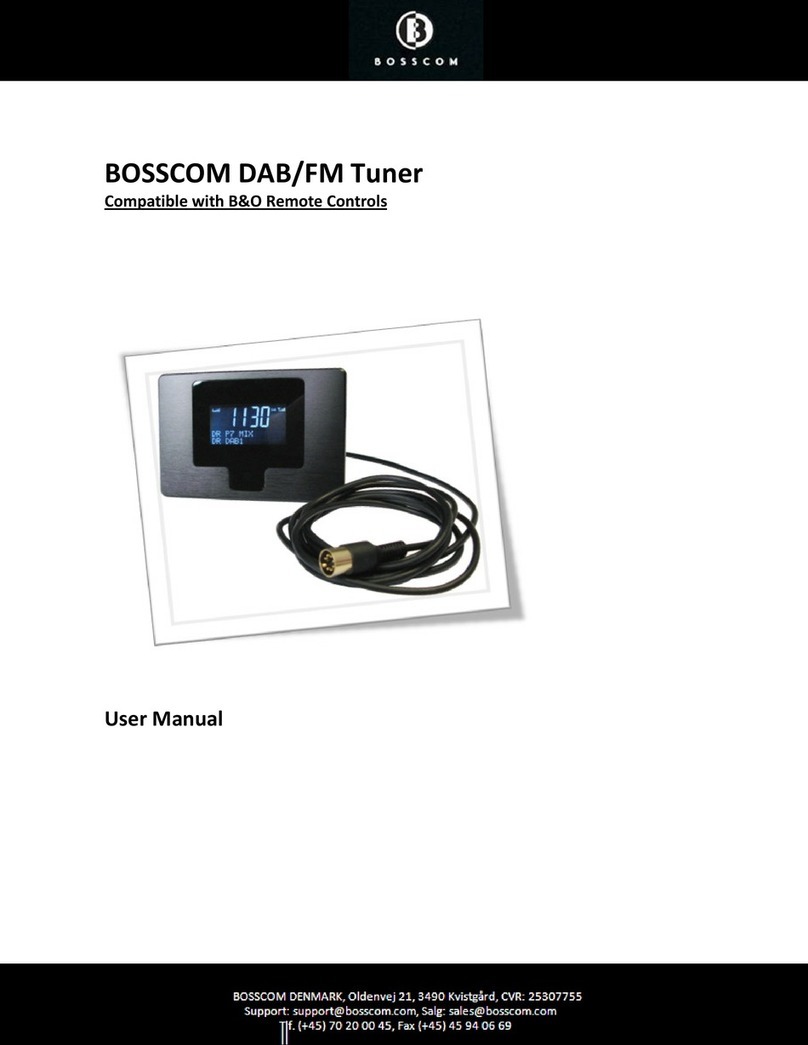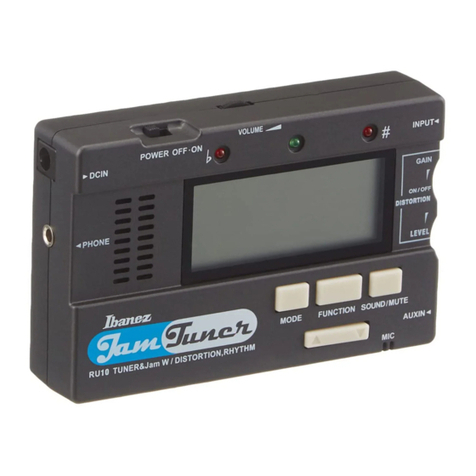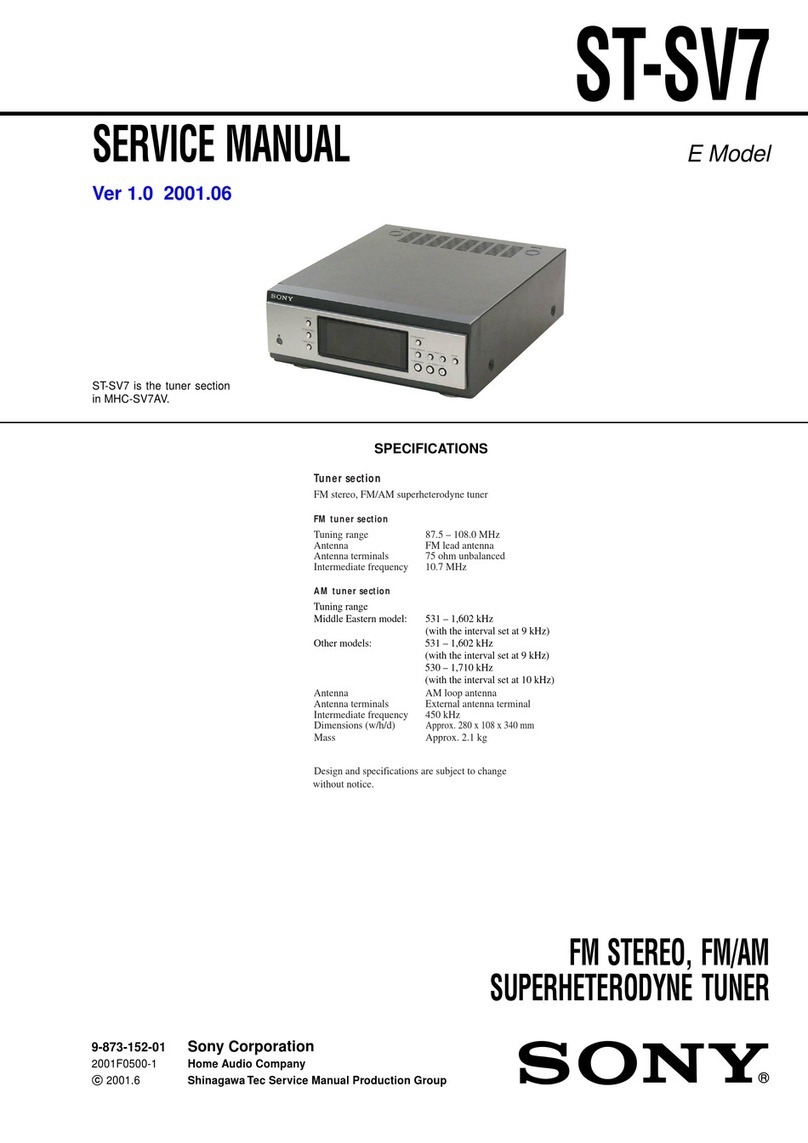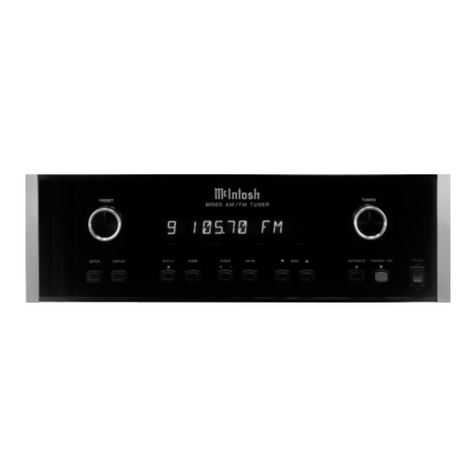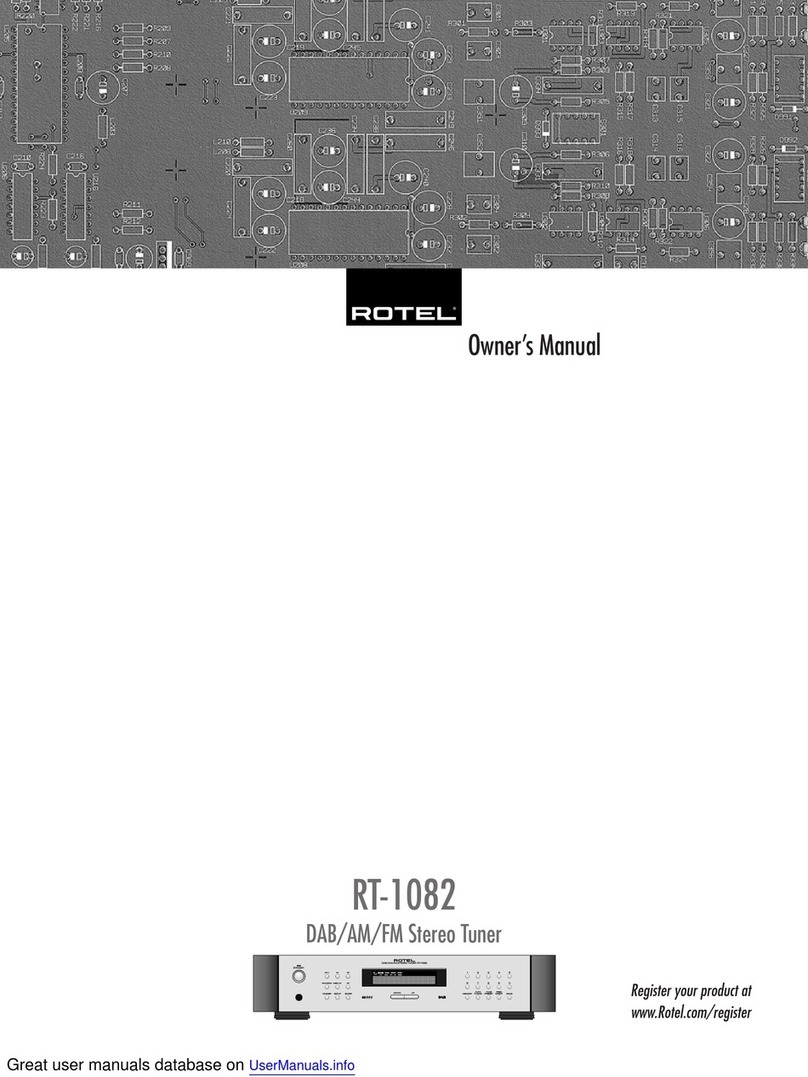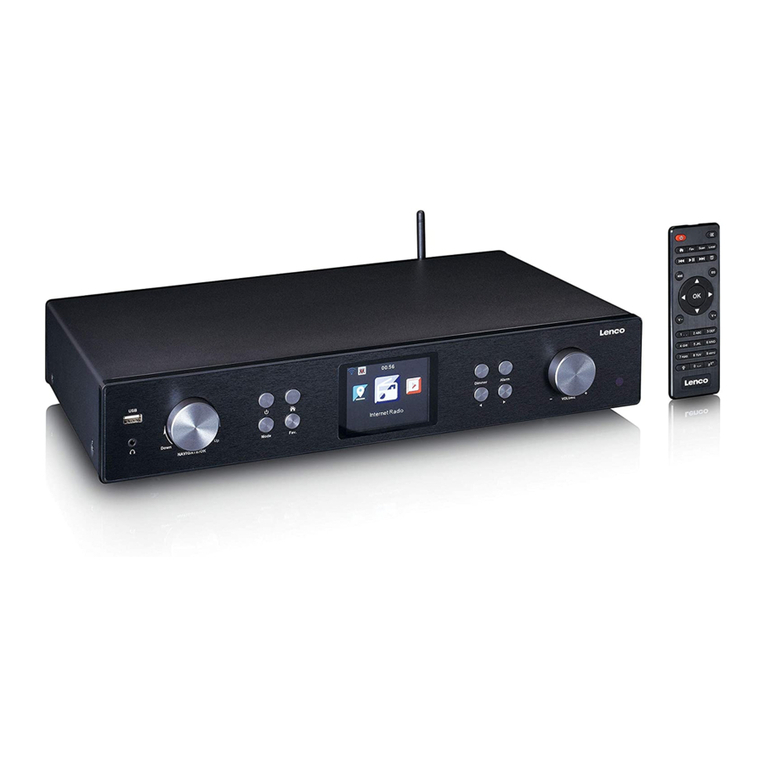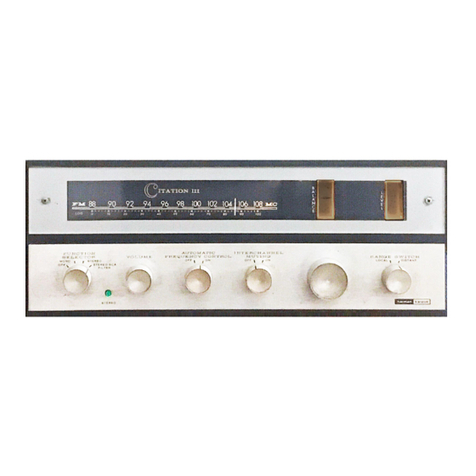Adastra MM321 User manual

MM321
1U Rack Mic/Line Mixer with Bluetooth®, USB & FM Tuner
Item ref: 953.028UK
User Manual
Version 4.0
Caution: Please read this manual carefully before operating
Damage caused by misuse is not covered by the warranty

953.028UK User Manual
Introduction
Thank you for choosing an Adastra MM321 mic/line mixer with built-in media player as part of your sound reinforcement system.
This unit is designed to offer high quality, dependable service for audio mixing and distribution.
Please read this manual to gain the best results from your product and avoid damage through misuse.
SAFETY SYMBOL AND MESSAGE CONVENTIONS
CAUTION
RISK OF ELECTRIC SHOCK
DO NOT OPEN
AVIS
RISQUE DE CHOC ELECTRIQUE NE PAS
OUVRIR
This symbol indicates that dangerous voltage constituting a risk of electric shock is
present within this unit
This symbol indicates that there are important operating and maintenance instructions in
the literature accompanying this unit.
SAFETY NOTICE
1. Prior to use, read through this manual
2. Keep the manual in good condition
3. Pay attention to safety warnings
4. Observe all operating requirements
5. Do not use the device near water or wet areas
6. For cleaning, only use a lint-free, dry cloth
7. Install according to the specifications
8. Place away from heat sources or heating appliances
9. Use mains lead provided and avoid damage to cable or connectors
10. Unplug power from mains during stormy weather or if unused for long periods
11. In case of malfunction, water ingress or other damage, consult qualified service personnel
12. Do not place in damp areas or near liquids or moisture. Do not spill liquids on the housing
13. Please pay attention to warning symbols during transit and placement
14. Terminals marked with the symbol are HAZARDOUS LIVE and should only be connected by qualified personnel
15. Ensure that the apparatus is connected to a mains socket with a protective EARTH connection
16. Ensure correct operation of the mains switch
Warning
To prevent the risk of fire or electric shock, do not expose any components to rain or moisture.
If liquids are spilled on the casing, stop using immediately, allow unit to dry out and have checked by qualified personnel before
further use. Avoid impact, extreme pressure or heavy vibration to the case
No user serviceable parts inside –Do not open the case –refer all servicing to qualified service personnel.
Safety
•Check for correct mains voltage and condition of IEC lead before connecting to power outlet
Placement
•This unit can be used free-standing or fixed into a 19” rack
•Ensure adequate support and access to controls and connectors when rack-mounting
Cleaning
•Use a soft cloth with a neutral detergent to clean the housing as required
•Do not use strong solvents for cleaning the unit

953.028UK User Manual
Front panel
Rear panel
Connection
Ensure the Power (15) is switched off until all input and output connections are in place.
Turn all rotary level controls (5 - 10) and Master level (13) fully down (anti-clockwise) to avoid loud noises
when switching on.
Set the BASS and TREBLE Tone controls (11, 12) to the vertical position (zero)
Channels 1, 2 and 3 can accept microphones or mono line level inputs, such as CD, TV or electronic keyboard.
Connect the main microphone or line level signal to Mic/Line 1 input (28) on the rear panel via balanced XLR
or 6.3mm jack.
If a condenser mic is being used, connect via XLR, select Mic level and 20V Phantom power on via the channel
1 DIP switches (27)
Further mic or line level signals can be connected to inputs 2 and 3 (24, 26) in the same way as for channel 1
Set the DIP switches for channels 2 and 3 (23, 25) to suit the input source.
Connect stereo line level sources to AUX 1 and AUX 2 RCA inputs (21, 22).
Outputs are available on L+R balanced XLR (18) for stereo operation and a single 6.3mm unbalanced jack
(19) summed to mono. Record outputs on L+R RCA (20) are unaffected by the Master level control.
1.
3.5mm AUX input to media player
9.
Aux line input 1 level control
2.
USB port
10.
Aux line input 2 level control
3.
Media player control panel
11.
Bass EQ boost/cut control
4.
Media player LCD display
12.
Treble EQ boost/cut control
5.
Media player level control
13.
Master output level control
6.
Mic/Line input 1 level control
14.
Output level LED indicators
7.
Mic/Line input 2 level control
15.
Power switch and indicator
8.
Mic/Line input 3 level control
16.
IEC mains inlet and fuse holder
24.
Input 3 balanced XLR/jack
17.
24V emergency alarm contacts
25.
Mic/Line and phantom switches Input 2
18.
L+R XLR balanced outputs
26.
Input 2 balanced XLR/jack
19.
6.3mm jack mono unbalanced output
27.
Mic/Line and phantom switches Input 1
20.
Record output L+R RCA
28.
Input 1 balanced XLR/jack
21.
Aux 2 line input L+R RCA
29.
Ch.1 override level
22.
Aux 1 line input L+R RCA
30.
BT antenna connector
23.
Mic/Line and phantom switches Input 3
31.
FM tuner antenna F connector

953.028UK User Manual
For the FM tuner to function correctly, it is advisable to connect an FM aerial to the F type antenna connector
(30)
If available, connect a 24V trigger from an alarm panel to the alarm contacts (17) to mute all except channel 1
in an emergency. (The 24V contacts can be connected with either polarity +/- or -/+ to operate)
Connect the rear IEC inlet (16) to the mains using the supplied mains lead (or an equivalent approved type).
Ensure that the supply voltage is correct for this equipment and that the mains outlet is switched on.
Operation
Ensure that amplifier(s) or active speaker(s) are switched off before powering up the MM321 mixer.
Switch on the power and the Power LED indicator should light (15)
Switch on power to the amplifier or active speaker(s) and turn volume(s) up part way. Turn up the MM321
Master level (13) half-way.
If connected, speak into a microphone whilst gradually turning up its channel level control (6, 7 or 8)
If no microphones are connected, a line input or internal media player (see below) can be used for checking.
The L+R output meters (14) should light up and the sound should be heard through the connected speakers.
Increase the Master output level if required and set the relevant channel level control to the required volume.
Repeat the above steps for all connected inputs whilst balancing the levels between channels as required.
For the AUX line inputs, a single rotary control for each (9, 10) adjusts the level of both left and right RCA
inputs.
Channel 1 input also has an override function which attenuates all other channels when there is a signal on
Ch.1
Turning the CH.1 Override Level control clockwise increases the amount that it mutes all other channels.
Sensible use of the output meters (14) will help to avoid overdriving the outputs and/or connected amplifiers.
The +10dB LED should only light briefly on percussive or transient parts of the sound (i.e. bass drum)
If the +10dB LED is lit for any longer than short bursts, the level controls will need to be turned down.
This will avoid signal clipping and overdrive, which can be damaging to equipment connected to the outputs.
For overall tone adjustment, moving the BASS and TREBLE EQ controls (11, 12) can help to tailor the sound
quality as required.
If the sound is too thin sounding, turn up the BASS rotary. If it is too deep sounding, reduce the BASS level.
If the sound is not very clear, turn up the TREBLE rotary. If it is too harsh sounding, reduce the TREBLE level.

953.028UK User Manual
Media player
UM series mixer-amplifiers are fitted with a built-in media player. This section comprises a Bluetooth receiver,
USB audio player, FM tuner and AUX input. Pressing the SOURCE select button will step through Bluetooth,
USB, AUX and FM tuner modes. Pressing the MUTE button for any source will mute the output.
Bluetooth
The Bluetooth function allows connection of a smart phone or tablet to the media player section for playback
of stored files or streamed digital audio.
In order to enable this function, it will be necessary to pair the sending device to the receiver as follows.
1. Open the Bluetooth settings menu on the smart phone or tablet (or other sending device)
2. Scan for Bluetooth devices and look for “adastra_0000” in the list of available devices
(ensure that the UM amp is powered on and within reception range)
3. Select “adastra_0000” and the sending device should confirm that it is connected as an audio device.
(note that “0000” may be a different number if it has been edited –see below)
4. Play audio from the sending device, ensuring that volume controls are not turned down/muted
5. Turn up the MEDIA volume control on the amplifier to the required level.
The Previous , Next and Play/Pause buttons will operate in Bluetooth as remote playback controls.
Holding the Previous track or Next track buttons will adjust the output volume of the player down or up.
The Bluetooth name can be customized to enable identification of individual nearby amplifiers.
To customize the Bluetooth number press and hold the Play/Pause button until adastra_0000 is displayed
with one of the characters flashing. Press Previous or Next buttons to edit the number and Play/Pause
to select another character. Hold Play/Pause to store the ID and exit.
Note: Android devices have the facility to re-name devices within the Bluetooth settings menu.
If the Bluetooth ID has been re-named on the Android device, editing the Bluetooth ID on the media player
will not affect the name displayed on that Android device.
FM Tuner
The FM tuner function operates in the same way as a standard FM radio and benefits from the connection of
an FM antenna to the rear panel ‘F’ type connector.
If no channels are tuned in, press the Play/Pause button to begin auto tuning, which scans available
stations and stores them as channels within the FM tuner. Pressing Play/Pause again will abort auto-tuning.
To delete any selected station, press and hold the REPEAT button.
Repeat the auto tuning process to re-populate any missing presets.
To step through pre-set stations, press the Previous or Next buttons.
Turn up the MEDIA volume control to hear the output from the speakers and increase to the required level.
Holding the Previous or Next buttons will adjust the output volume of the player.

953.028UK User Manual
USB player
When a USB memory stick is inserted into the USB port, the track number and time will show in the display
and audio files will start to play automatically.
If playback does not start automatically, press the SOURCE select button and Play/Pause button to check
if the player is set to the correct mode. Try Previous and Next buttons if the selected track is unable to
play. Also, check that the audio files are mp3 type.
Turn up the MEDIA volume control to hear the output from the speakers and increase to the required level.
There are 3 repeat modes: Repeat All tracks, Repeat Current track and Random.
Pressing the REPEAT button will cycle through these modes as shown in the top right of the display.
Pressing the Previous button briefly steps backwards through tracks on the memory device. Press and hold
this button to decrease the playback volume.
Pressing the Next track button briefly steps forwards through tracks on the memory device.
Press and hold this button to increase the playback volume.
To pause the current track, press the Play/Pause button and press it again to resume playback.
AUX input
When a playback device is connected to the 3.5mm AUX input, the display will show “AUX”.
Alternatively, this source can be selected by the SOURCE button.
The output level of this AUX input is controlled by the MEDIA volume control and is independent of the rear
RCA line inputs. When other media player sources are selected, this AUX input is muted.
Specifications
Power supply
100-240Vac, 50/60Hz
Fuse
T1AL
Inputs
3 x XLR/jack (bal/unbal) mic/line, 2 x Aux L+R RCA, 3.5mm jack to media player
Audio source
Internal Bluetooth, USB, FM & Aux player
Outputs
L+R XLR, Mono 6.3mm jack, Record out (RCA)
Emergency control
24V contacts mute all except channel 1
Phantom power
+20V (switchable channels 1-3)
Input impedance
2.2k Ohms (mic/line), 10k Ohms (aux)
Controls
Media, 3 x Mic/Line, 2 x Aux, Treble, Bass, Master level
Rear panel controls
CH.1 override level, mic/line and phantom DIP switches
Frequency response
Mic: 20Hz - 18kHz, Line: 14Hz - 20kHz, Aux: 10Hz –23kHz
Input sensitivity
-45dBV
Input sensitivity: aux/line
-10dBV
Signal to noise ratio
Mic: 55dB, Aux/Line: 60dB
Dimensions
482 x 130 x 44mm
Weight
1.43kg
Disposal: The “Crossed Wheelie Bin” symbol on the product means that the product is classed as Electrical or
Electronic equipment and should not be disposed with other household or commercial waste
at the end of its useful life. The goods must be disposed of according to your local council guidelines.
Hereby, AVSL Group Ltd. declares that the radio equipment type 953.028UK is in compliance with Directive 2014/53/EU
The full text of the EU declaration of conformity is available at the following internet address: http://www.avsl.com/assets/exportdoc/9/5/953028UK%20CE.pdf
Errors and omissions excepted. Copyright© 2022.
AVSL Group Ltd. Unit 2-4 Bridgewater Park, Taylor Rd. Manchester. M41 7JQ
AVSL (EUROPE) Ltd, Unit 3D North Point House, North Point Business Park, New Mallow Road, Cork, Ireland
This manual suits for next models
1
Table of contents
Other Adastra Tuner manuals
